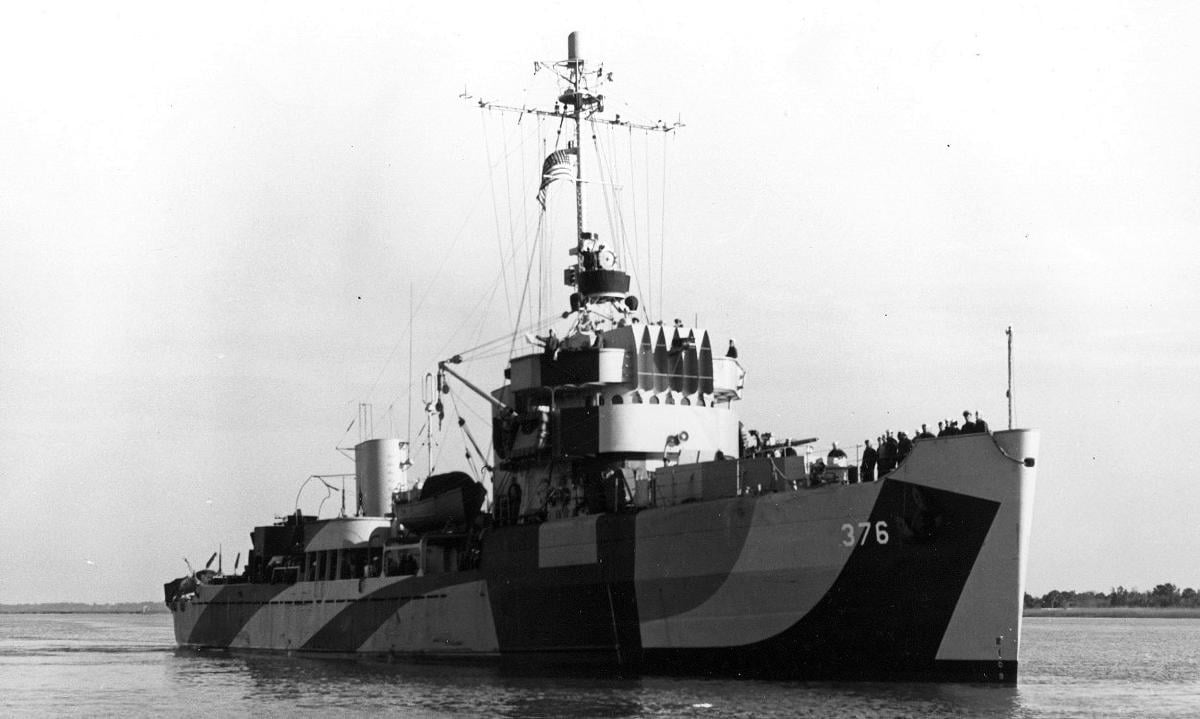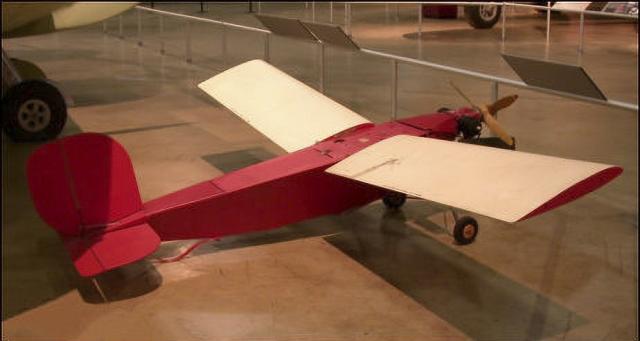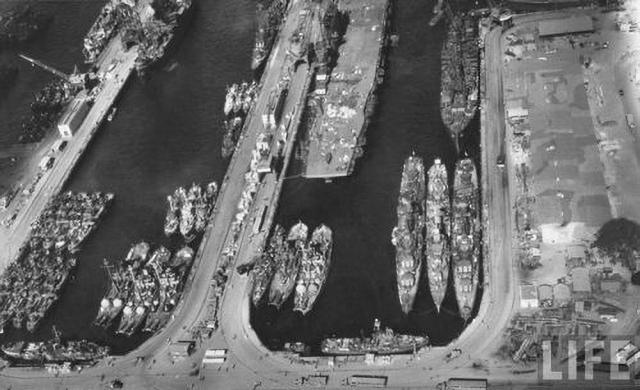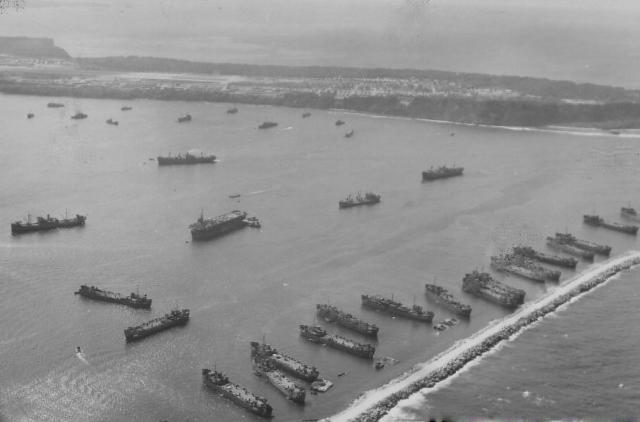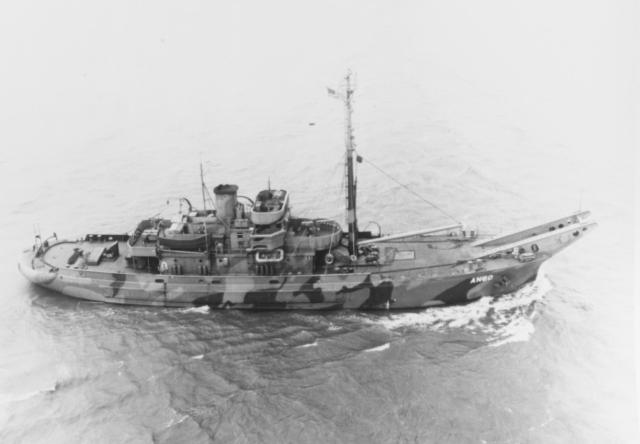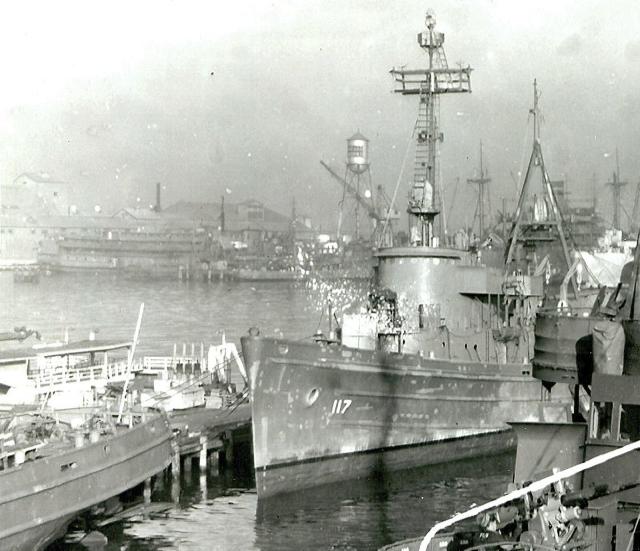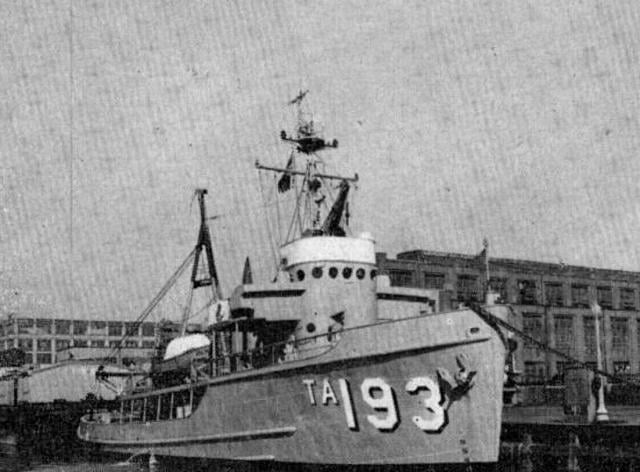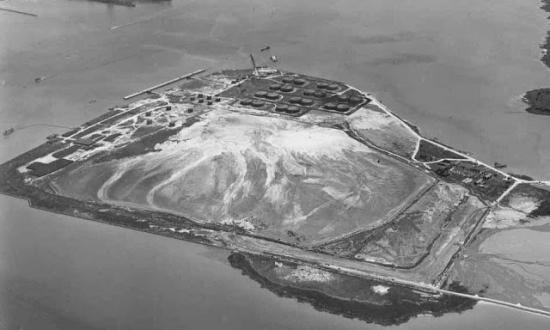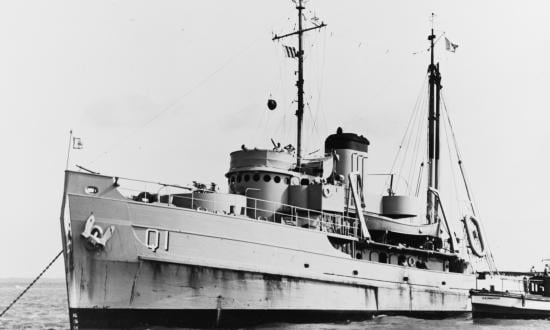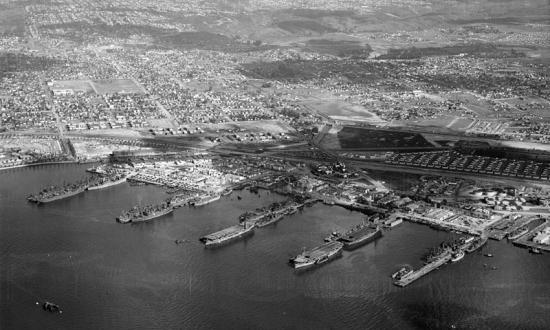When we last left my grandfather’s ship, the USS Sway (AM-120), she had transited the Panama Canal in May 1945 and had undergone repairs in San Diego before transiting to Hawaii. Her next destination would be Guam. The war in Europe had ended on 8 May while the Sway was en route to San Diego. The Battle of Okinawa, which was the Sway’s ultimate destination, was ongoing. As Allied forces continued to close in on the Japanese Home Islands, the fighting was becoming more fierce and desperate. The kamikaze had first been employed against Allied ships in late 1944 and were continuing as the lack of experienced Japanese pilots led to more desperate tactics. The Okinawa campaign would see the peak of these attacks while preparations were being made for the invasion of the Japan. This was the battle zone the Sway was about to enter.
(As noted with previous articles, all entries come from the ship’s war journal unless otherwise noted.)
1 June 1945
At Pearl Harbor. 0630—Under way for training cruise in company with CominDiv 16 (OTC) in USS Seer [AM-112], CominDiv 18, in USS Swift [AM-122], USS Threat [AM-124], USS Ptarmigan [AM-376], USS Speed [AM-116], USS Symbol [AM-123]. Conducted Air-Search Radar calibration, AA practice at sleeve, surface firing, day and night. Formation streaming during night.
2–3 June 1945
On training cruise in operating area south of Oahu and Molokai. Streamed and adjusted all types of mine sweeping gear. Exercised at minesweeping formation steaming. Fired AA practice at drones and fired at sleeves with moored minesweeping gear streamed. Shot down one drone. Formation steaming at night.
4 June 1945
On cruise. 0845—Entered Pearl Harbor approach channel and tied up to at Berth DE-4, Navy Yard, Pearl Harbor, at 0926. Commenced overhaul and logistics period.
5–10 June 1945
At Navy Yard, Pearl Harbor, for availability, and logistics. Calibrated degausing, loaded fuel, stores, ammunition, mine sweeping gear.
11 June 1945
At Navy Yard, Pearl Harbor. 1350—Under way in accordance with CTG 18.2 Operation order 0170-45 ad modified in company with CominDiv1 8 (CTC) in USS Swift, USS Threat, USS Symbol, Unit designated TU.18.2.11. 1525—Cleared swept channel, formed cruising disposition, took departure for Guam, Marianas Islands.
12–24 June 1945
En route to Guam. 12th, 1200—Changed to plus 11 time zone. 15th, 1824—Fired AA practice at star shells. 16th, 0800—Crossed 180th Meridian, changed to minus 12 time. 19th, 1200—Changed to minus 11 time. 19th, 1540—Man overboard. 19th, 1545—Man recovered. 20th, 2315—Sighted Eniwetok Island. 24th, 1230—Fired AA practice at towed sleeves. 24th, 1600—Entered Apra Harbor, Guam, Marianas Island. 24th, 1715—Moored alongside USS Catclaw [AN-60] in Berth 302.
25 June 1945
At Guam. TU 18.2.11 dissolved. Reported to CTU 94.7.2 for duty in T.F. 31 escort pool in accordance with ComMarianas Dispatch 250627/June.
26–29 June 1945
At Guam for logistics and maintenance.
30 June 1945
At Guam. Together with USS Speed formed into TU 94.19.6 in accordance with CTU 94.7.1 Dispatch 300100/June. CTU. 94.19.6 in Speed. 1724-TU underway from Guam, stood out swept channel. Took departure for Okinawa as escorts for Guam-Okinawa 11, consisting of ATF 117, and ATA 193 and tows in accordance with accordance with CTU 94.7.1 Op-order 236.45.
Three ships are mentioned in the above war journal entry: the USS Speed, which was a sister ship to the Sway, as well as two tugs, the USS Wateree (ATF-117), an Abnaki-class fleet ocean tug which records indicate was towing two pontoon barges during this voyage. and the USS Stallion (ATA-193) a Sotoyomo-class fleet auxiliary tug. Both are pictured below.
1 July 1945
Under way in company with T.U. 94.19.6, escorting convoy Guam-Okinawa 11 en route to Okinawa. C.T.U. in USS Speed. Convoy Commodore in ATF-117.
4 July 4 1945
AA gunnery practice at star shells.
5 July 1945
1605–1755—Streamed and adjusted “O” type sweep gear.
The USS Sway was still in transit from Guam to Okinawa. There would not be another entry in the ship’s war journal until she arrived at Okinawa on 12 July.
12 July 1945
1605—Anchored Buckner Bay, Okinawa Jima. Guam-Okinawa Convoy 11 dissolved. Reported to C.T.F.-39.
By this point the Battle of Okinawa was considered completed; however, there were still mopping-up operations and mines to be cleared. Also, there were still more kamikaze suicide attacks on naval vessels to come.



